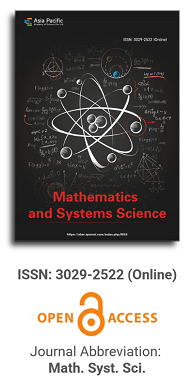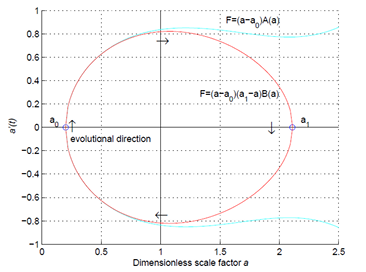


Inherit variability characterization considering piezocone test data: Application to bauxite tailings
Vol 3, Issue 2, 2025
Download PDF
Abstract
Variability characterization is a key component in the reliability assessment of geotechnical systems, particularly in scenarios involving tailings deposits, where spatial heterogeneity can critically impact design safety. Despite advances in modeling spatial randomness, many reported cases still rely on theoretical assumptions to define appropriate statistical characterizations—such as theoretical probability density functions (PDFs) and correlation structures—which may misrepresent site-specific conditions. To bridge this gap, piezocone penetration tests (CPTu) stand out as promising tools for providing continuous measurements along a vertical profile that can be used to define statistical behavior and avoid bias. This paper presents a spatial variability characterization of a bauxite tailings deposit based on mechanical parameters derived from CPTu data. The study includes basic statistical analysis—mean (μ), standard deviation (s), coefficient of variation (CV)—alongside a comparison with theoretical PDFs. Subsequently, spatial correlation is evaluated through covariance analysis and estimation of the vertical scale of fluctuation (δ), using a dedicated subroutine that fits theoretical autocorrelation models (TAMs). The deposit is classified as highly variable according to the IcRW index. The normal and Weibull PDFs best represent the data distributions. The vertical scales of fluctuation vary significantly: 0.01 m to 4.43 m for cone resistance (qc), 0.01 m to 4.36 m for sleeve friction (fs), and 0.01 m to 5.00 m for pore water pressure (u2). These findings offer valuable input for probabilistic stability and serviceability analyses, contributing to safer and more informed geotechnical designs involving mine tailings.
Keywords
References
1. Schnaid F, Dienstmann G, Odebrecht E, et al. A simplified approach to normalisation of piezocone penetration rate effects. Géotechnique. 2020; 70(7): 630-635. doi: 10.1680/jgeot.18.t.033
2. Fenton AG, Griffiths DV. Risk assessment in geotechnical engineering. John Wiley and Sons; 2008.
3. Salgado R, Prezzi M, Ganju E. Assessment of Site Variability from Analysis of Cone Penetration Test Data. Purdue University; 2015. doi: 10.5703/1288284315523
4. Dienstmann G, Perini L, Meier AL, et al. Incorporating inherited variability into drainage effect analysis of piezocone tests in gold tailings. In: Proceedings of the Institution of Civil Engineers—Geotechnical Engineering; 2025. doi: 10.1680/jgeen.23.00082
5. Campello IC, Gardoni MG, Pimentel KCA, et al. Characterization of Vertical Spatial Variability of Soils Using CPTu Data Exploration. In: Proceeding of the 8th International Symposium for Geotechnical Safety & Risk (ISGSR 2022); 2022. doi: 10.3850/978-981-18-5182-7_00-03-010.xml
6. Phoon K, Kulhawy FH, Grigoriu MD. Reliability-Based Design of Foundations for Transmission Line Structures. Cornell University, Ithaca, New York: Eletric Power Research Institute; 1995.
7. Uzielli M, Vannucchi G, Phoon KK. Random field characterisation of stress-nomalised cone penetration testing parameters. Géotechnique. 2005; 55(1): 3-20. doi: 10.1680/geot.2005.55.1.3
8. Kenarsari EA, Chenari RJ, Eslami A. Characterization of the correlation structure of residual CPT profiles in sand deposits. International Journal of Civil Engineering. 2013.
9. Dienstmann G, Schnaid F, Maghous S, et al. Piezocone Penetration Rate Effects in Transient Gold Tailings. Journal of Geotechnical and Geoenvinronmental Engineering. 2018.
10. Vick SG. Planning, design, and analysis of tailings dams, 2nd ed. BiTech, Vancouver, Canada; 1990.
11. Ayala J, Fourie A, Reid D. Improved cone penetration test predictions of the state parameter of loose mine tailings. Canadian Geotechnical Journal. 2022; 59(11): 1969-1980. doi: 10.1139/cgj-2021-0460
12. American society for testing and materials. D5778: Standard Test Method for Electronic Friction Cone and Piezocone Penetration Testing of Soils. West Conshohocken; 2007.
13. Robertson PK, Wride CE. Evaluating cyclic liquefaction potential using the cone penetration test. Canadian Geotechnical Journal. 1998; 35(3): 442-459. doi: 10.1139/t98-017
14. Bedin J. Interpretation of piezocone tests on bauxite residues (Portuguese). Universidade Federal do Rio Grande do Sul; 2006.
15. Ladd CC, Foott R. New Design Procedure for Stability of Soft Clays. Journal of the Geotechnical Engineering Division. 1974; 100(7): 763-786. doi: 10.1061/ajgeb6.0000066
16. Milan H, Dienstmann G. Assessment of vertical spatial variability in a marine sedimentary deposit based on standard penetration tests. Marine Georesources & Geotechnology; 2025. doi: 10.1080/1064119x.2025.2481494
17. Becker LB, Aguiar ALS, Lacerda WA. Variability of the undrained strength of the plastic tailings from the Germano dam in Mariana, Brazil. Geomechanics and Geophysics for Geo-Energy and Geo-Resources; 2024. doi: 10.1007/s40948-024-00750-4
Supporting Agencies
Copyright (c) 2025 Author(s)
License URL: https://creativecommons.org/licenses/by/4.0/
Editor-in-Chief

Prof. Youssri Hassan Youssri
Cairo University, Egypt
Asia Pacific Academy of Science Pte. Ltd. (APACSCI) specializes in international journal publishing. APACSCI adopts the open access publishing model and provides an important communication bridge for academic groups whose interest fields include engineering, technology, medicine, computer, mathematics, agriculture and forestry, and environment.


.jpg)

.jpg)
